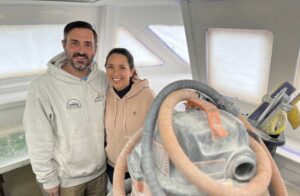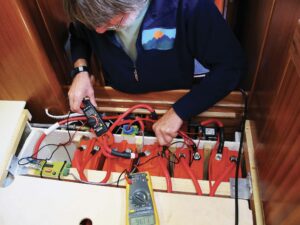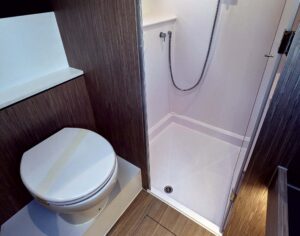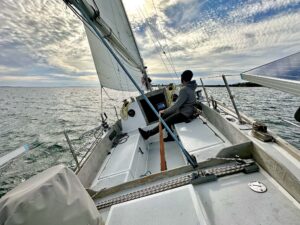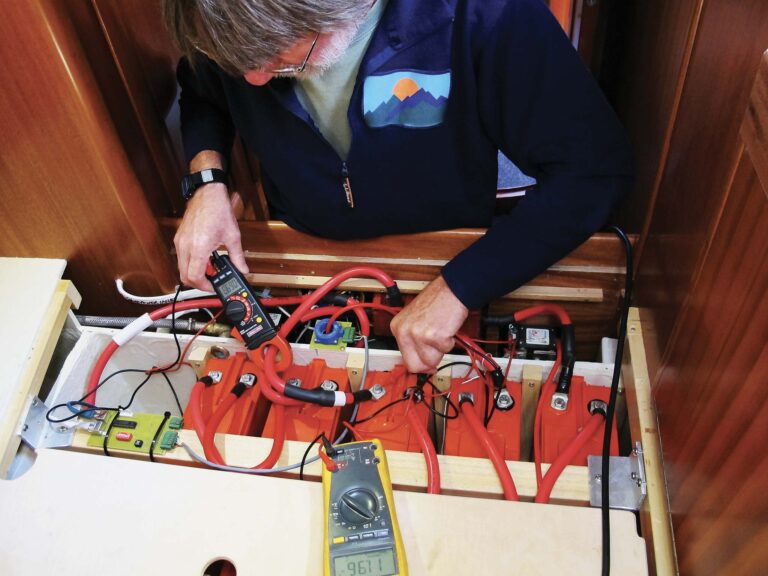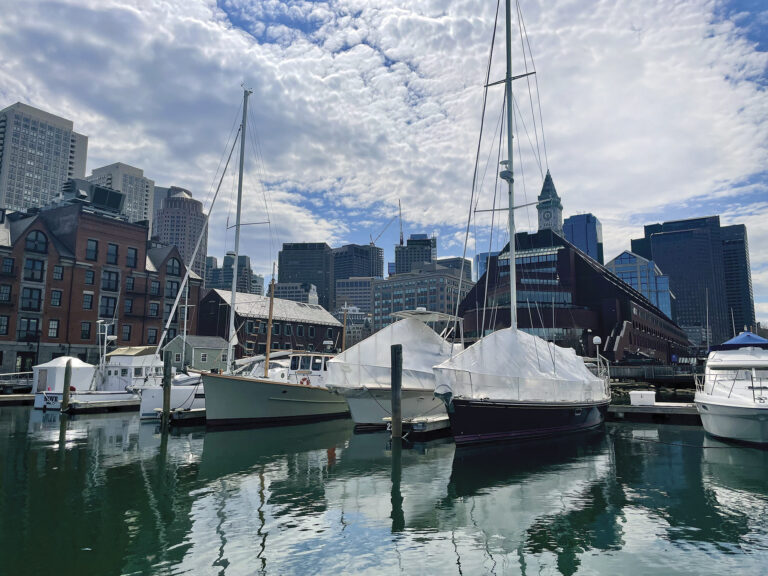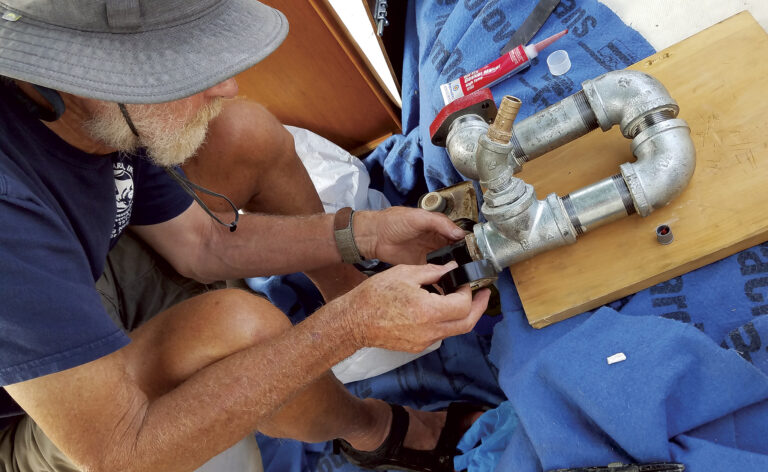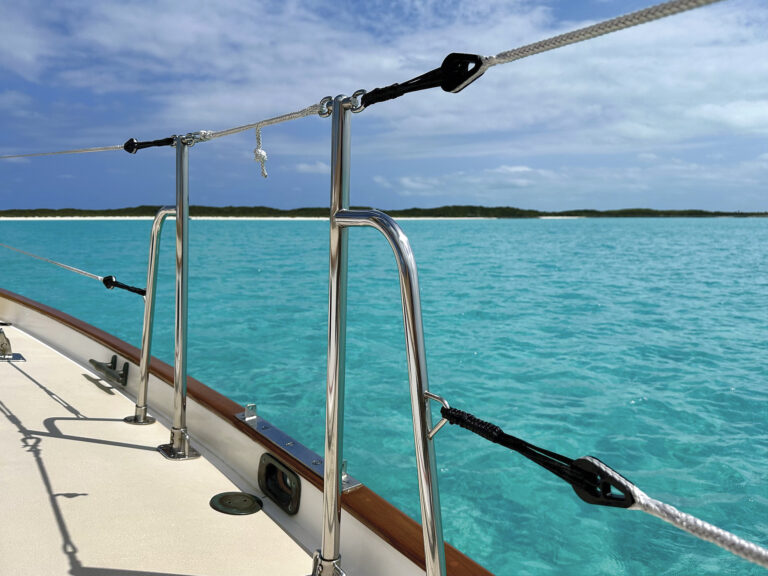In the first two installments of this three-part story on buying new sails we considered types of material, sail-cut choices and construction options. Now we’ll discuss how to measure your boat in order to give your sailmaker the information he needs to build your new sails. Measurements need to be spot-on accurate or you’ll probably get sails that don’t quite meet your expectations. Take several measurements to ensure that your findings are consistent and accurate, and if in doubt, consult your sailmaker. Ultimately, it’s better to hire a pro than it is to end up with brand-new sails that don’t fit right.
MEASURING FOR A HEADSAIL
So you’ve made all the necessary decisions regarding the design and construction of your new sail, and now it’s time to make measurements specific to your boat. Taking these measurements, rather than relying on a sailmaker’s measurements of similar boats, is important. Often there are differences in rig dimensions on the same model boat from the same builder. For example, a previous owner may have used a different roller-furler or a different outhaul system to those commonly used on similar boats, or the rig may have been replaced. Some manufacturers offer different rig options that can also affect the sail measurement. Measuring your boat carefully will dramatically improve the chances of your sail fitting perfectly the first time you bend it on. Most sailmakers have a standard measurement form that will help you get the measurements they need; let’s look at the more important measurements.
For roller-reefing headsails to work properly, the upper swivel must be close to the top of the foil. If the sail is cut too short (so that the swivel is below the top of the foil), the halyard may have a tendency to wrap around the foil instead of allowing the upper swivel to turn smoothly. This prevents the sail from rolling up when desired and is a potential safety concern. To make sure the new genoa is long enough in the luff, you need to measure the distance between the tack shackle on the furling drum and the lower shackle on the upper swivel.
To do this, remove the existing headsail and attach a long tape measure—either a steel tape or a cloth tape that does not stretch—to the lower shackle of the upper swivel. If the tape measure has a strong ring or loop at its end, attach the tape measure directly to the upper swivel’s lower shackle. If the tape’s ring/loop is too small to fit the shackle, use light line or a wire tie to secure the end of the tape to the shackle. If the tape measure has no ring on the end, fix it to the body of the swivel with strong fiberglass-reinforced packing tape. If you do this, the bottom of the lower shackle will land partway down the tape, probably around 3 to 6 inches. Make a note of this number; you must subtract it from your measured length to get the true length.
Also, be sure to attach a light retrieval line to the upper swivel or halyard so you can pull them down afterward. Next, hoist the swivel and tape measure to the top of the foil, hoist slowly and smoothly so the tape measure doesn’t come free. Once you’ve achieved maximum hoist, cleat off the halyard. Pull the tape measure taut to the tack shackle and take your measurement (photo 1). This is your “space available” measurement. Before retrieving the swivel, double check that the halyard/swivel is at its maximum-hoist position. If you can’t see clearly from on deck, take your binoculars and move off the boat a ways to get a good view of the swivel.
In addition to the space-available measurement, you need to tell your sailmaker where your boat’s headsail tracks and cars are located. The clew of your new headsail must be at the correct height so that your existing deck hardware can properly trim the sail. I know from experience it’s an unpleasant day when your new sail has a sheeting position forward or aft of the current track. Use your tape to measure the distance from the tack shackle on the furling drum to both the forward- and aft-most usable positions on your genoa track.
This is also a great time to determine how high above the deck you want the headsail clew. Racing sailors like their clews low for performance reasons (they also typically don’t have furling drums to contend with), but cruisers need to take visibility into consideration (photo 2). I like to be able to see the horizon all the way from the bow to the stern when sitting at the helm with the boat upright and the headsail completely unrolled. This tends to put the clew somewhat higher than usual, but for me, safety and good visibility are well worth the small performance sacrifice. The easiest way to get this measurement is to sit or stand in the cockpit at your normal steering position while a helper stands on deck over the headsail-sheeting track just abaft the shrouds with a tape measure ready. Have your crewmember raise or lower his hand until you have the desired range of visibility beneath the hand. Measure from the helper’s hand to the track to find the desired clew height. Once your sailmaker has the correct track-location dimensions, he or she can tell whether or not your desired clew height is achievable. The higher the clew, the further aft the sheeting point, and your genoa track may not be long enough.
MAINSAIL MEASUREMENTS
Measuring for a mainsail is a bit more difficult than a headsail and is also more important. If clew height on a headsail is off by a few inches all you typically need do is move the jib car a few inches either way on its track. If the mainsail clew is a few inches too low, the boom may hit the dodger, bimini or some other structure on the boat.
Choose a windless day and attach your tape measure to the main halyard shackle (photo 3). Attach the halyard to the sail’s headboard and hoist the sail to the top of the mast, applying modest halyard tension once you reach maximum hoist. Take your binoculars, move away from the boat and inspect how close the headboard and shackle are to the top of the mast. If you have a datum line (black band) at the top of your mast, this is a useful visual reference point. If the headboard and shackle are close to the top of the mast without interfering with the masthead or backstay, measure the distance between the halyard shackle and the tack pin (above your boom’s gooseneck); this is your luff length (photo 4). If the headboard and/or shackle are interfering with or catching on the masthead or backstay, ease the halyard until both are clear and use this dimension as your luff length. If there is a significant distance, 12 inches or more, between the fully hoisted headboard and the top of the mast, you can have your new sail built with a longer luff. This gives you more sail area up high, which is great for light-air performance.
Before you lower the main, take your tape out to the mainsail’s clew and, with the outhaul tight and the mainsail sheeted tightly on the boat’s centerline, measure this distance, which is the leech length. If you’re happy with the existing boom height, give this dimension to your sailmaker. If you want the end of the boom lower or higher, add or subtract an appropriate amount from your measurement. Getting the leech length correct is critical to getting your boom at the right height. It’s best to err on the short side, so your boom—if anything—is slightly higher than you’d ideally want it.
You can now lower your mainsail and determine the length of its foot by measuring from the back side of the mast to the aft edge of the clew. Also measure from the back of the mast to the tack pin. Take a normal amount of outhaul tension and make sure you leave room to trim the outhaul. If you feel your current mainsail foot is too short or long, add or subtract a bit to get the foot length you want. You should also take a picture of the tack and the clew of the sail, preferably with a ruler visible as a reference (photos 5 and 6). These photos will allow the sailmaker to properly cut and shape the tack and clew of your sail to fit your gooseneck and outhaul.
The last task is to identify the correct luff and foot hardware, which will be one of three types; internal flat or round slides (sometimes called slugs) that fit into a groove, or metal external slides that fit onto an external track on the back of the mast or top of the boom. Once again, a photo along with the dimensions (width, length, thickness) of the luff and foot slides will help your sailmaker identify them and install the correct hardware.
SUMMARY
Going sailing for the first time with a brand new sail that’s properly designed and built to suit your sailing style is an exciting and rewarding experience. Your boat will feel livelier and will look better. Plus, you won’t have to reef quite as early, as your new sails won’t be as stretchy and will have a far superior shape. Actively participating in the creation of your sails makes the experience that much more rewarding.

